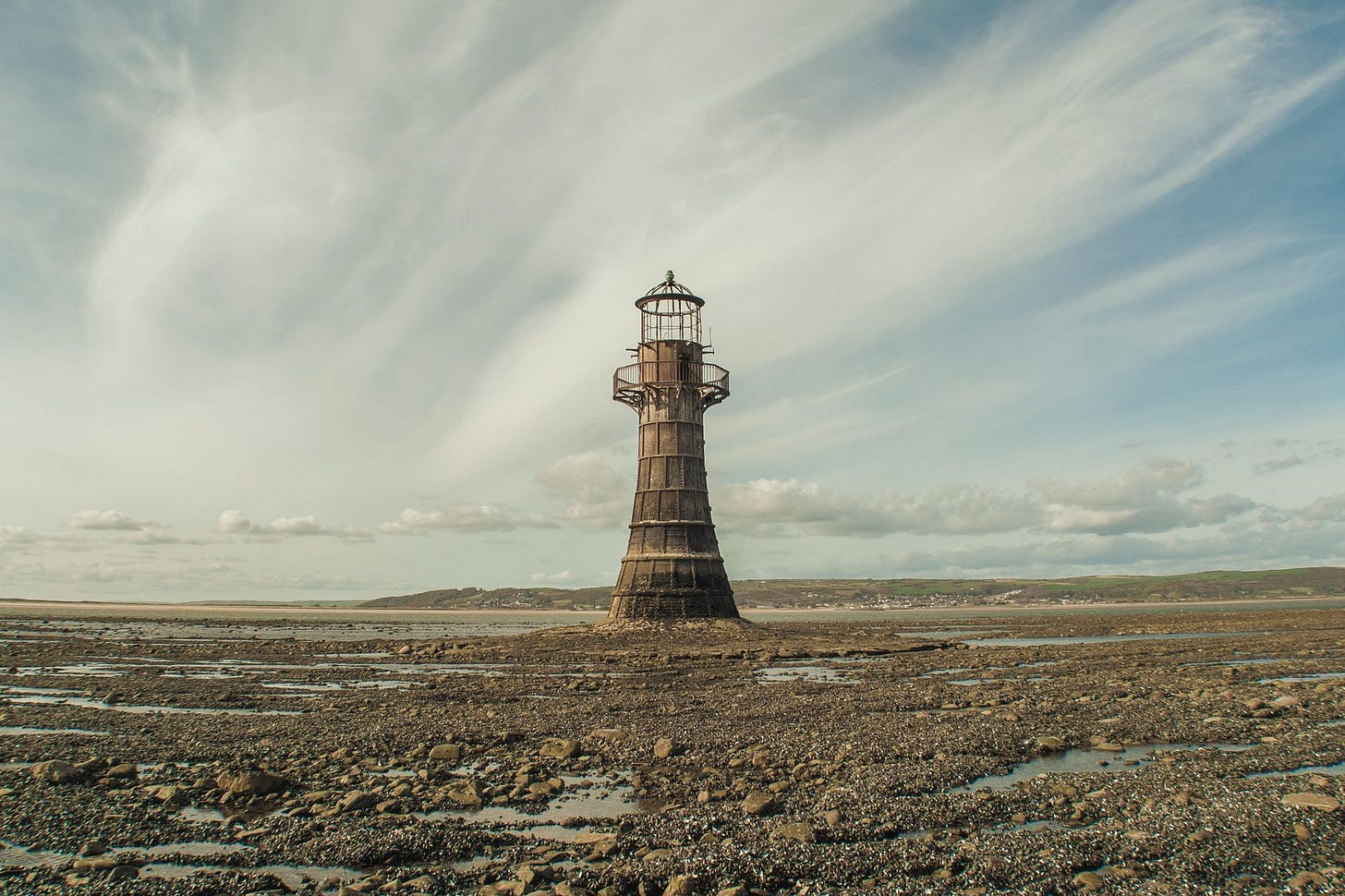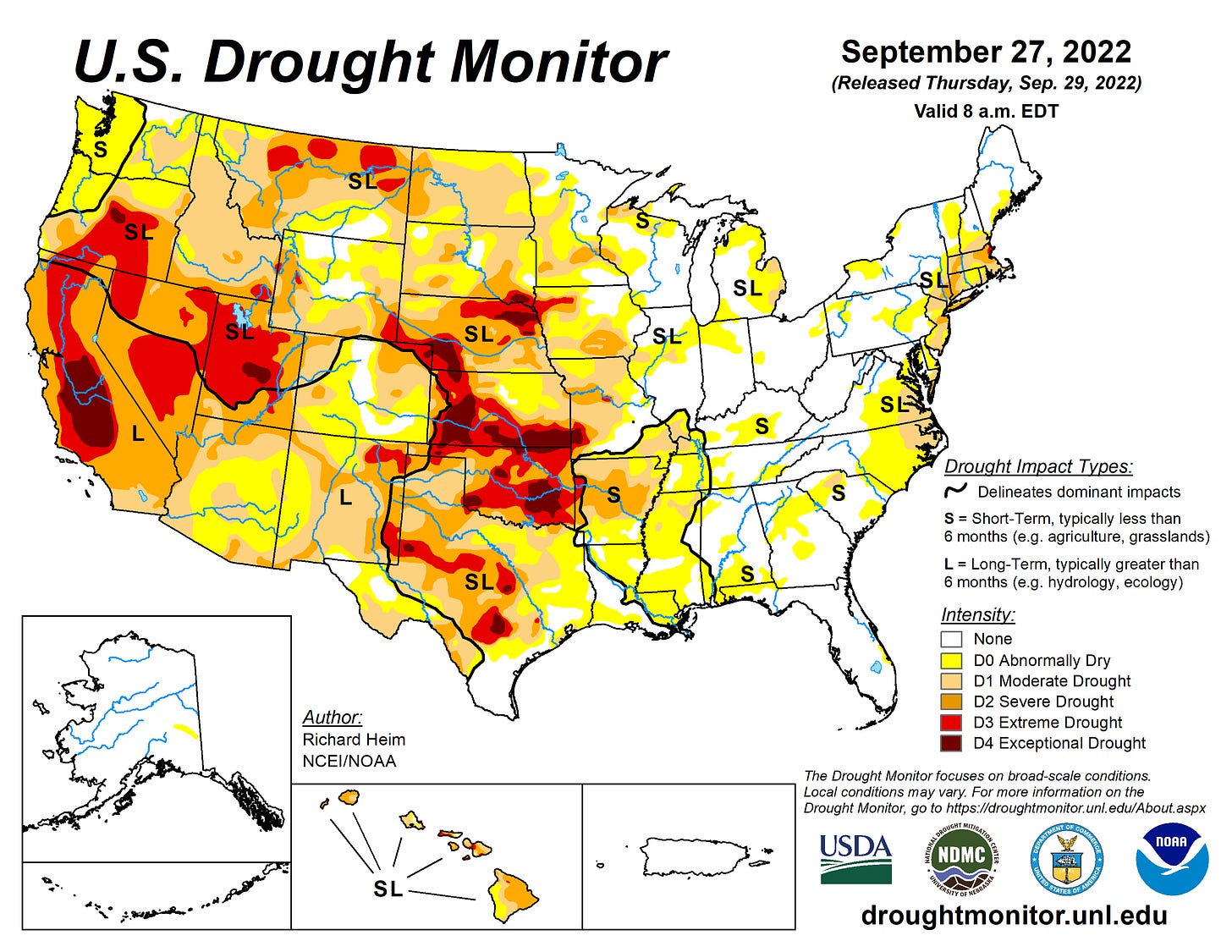The Mississippi River is Drying Up, and That's The Least of It
The Mississippi River is drying up for the second year in a row. It's a problem.
The Mississippi River is drying up, again. After months of drought, it's sinking down to record lows. It's so low in places, you can walk out into the middle of the river bed and search for fossils and artifacts.
Tourists are loving it.
Farmers aren't.
The agriculture sector relies on the Mississippi to transport crops harvested in the fall. Since September, dozens of barges have run aground. Civil engineers are working overtime to dredge the river.
This same problem happened last year. It was the first time in decades the river had gotten so dry that ships couldn't pass. Farmers wound up having to lighten the loads and supplement with trucking. It drove shipping costs up. See, sailing crops downriver uses far less energy. In the end, the drought led to billions in losses. Now it's looking like an annual event.
Saltwater intrusion threatens more than 800,000 residents in Louisiana, including New Orleans. This happens when the river flow weakens to the point that the current reverses and lets the ocean in.
The Mississippi isn't supposed to be going dry.
Just two years ago, you could hear whispers about digging canals from the Mississippi westward to help with droughts.
Now that's off the table.
If you're not sure what this means for our food production, you can take a look at the U.S. Department of Agriculture's drought maps.
Here's the winter wheat map:
Here's the spring wheat map:
Here's the corn map:
Here's the soybean map:
Here's the beef map:
Climate scientists have been telling us for years now that the U.S. is undergoing a process of desertification, made worse by climate change. If you want a reference, think back to the Dust Bowl, a period where our breadbasket dried up so much, dust storms brought daily life to a standstill. Millions of farmers fled, trying to settle elsewhere. They were climate refugees.
It's on track to happen again.
Here's what the U.S. looked like last year:
Here's what it looks like this year:
Wheat serves as a good bellwether crop, since we use it in just about everything. Back in May, Bloomberg reported that farmers expected their lowest wheat harvest since 1917. They've been abandoning their fields "at the highest rate in more than a century."
Let's look at wheat production over the long term:
As you can see, wheat production has peaked. For the last several years, it's been hovering around the 1970s levels. You can look at charts for virtually every crop, from beef to oats. They're dropping.
Obviously, that's not good.
Corn seems to be doing fine, but that doesn't help us much because of the way we use it. Years ago, Scientific American did a dive into the flaws in our agriculture. Corn dominates our fields, but only 10 percent of what we grow goes into food production. The rest goes into fuel and animal feed. That's a shame. Corn could feed millions of people. When it's converted into animal feed, we wind up losing anywhere from 50 to 90 percent of its calories.
On the one hand, drought is throttling our food production. On the other, the way we grow food is terrible. North America never provided a hospitable climate for wheat and cattle production. It's even less hospitable for crops like almonds and alfalfa, and yet we still grow them.
We should stop.
For decades, farmers have relied on the Ogallala aquifer during droughts. They've been pumping out water ten times faster than rain can replenish it. Now even politicians are worried about depleting it within the next few years. If that happens, it would kill up to 25 percent of food production. Some farmers have been cutting back voluntarily.
This situation demands a comprehensive plan.
Agriculture in the U.S. has been relying on aquifers, pesticides, and fertilizers to meet our food demands. That's running out. We have to ditch the old system and start planting more sustainable crops.
That means changing our diet.
We should be eating beans and amaranth, not cheeseburgers. If Americans can't change, they're going to starve. It won't happen overnight. Instead, food will just keep getting more expensive.
Americans use roughly three times as much water as the rest of the world. We practically waste it on manicured lawns, waterparks, and golf courses. Just like their diets, they're going to have to change how they think about water. There's simple ways to do it. Cut back on the laundry machine. Flush less. Take fewer showers, or shorter ones. Get water-efficient showerheads and aerators for your faucets. My family does all of this, and our water use lines up with the rest of the world. We won't waste water.
This is our future.
It's dry.











